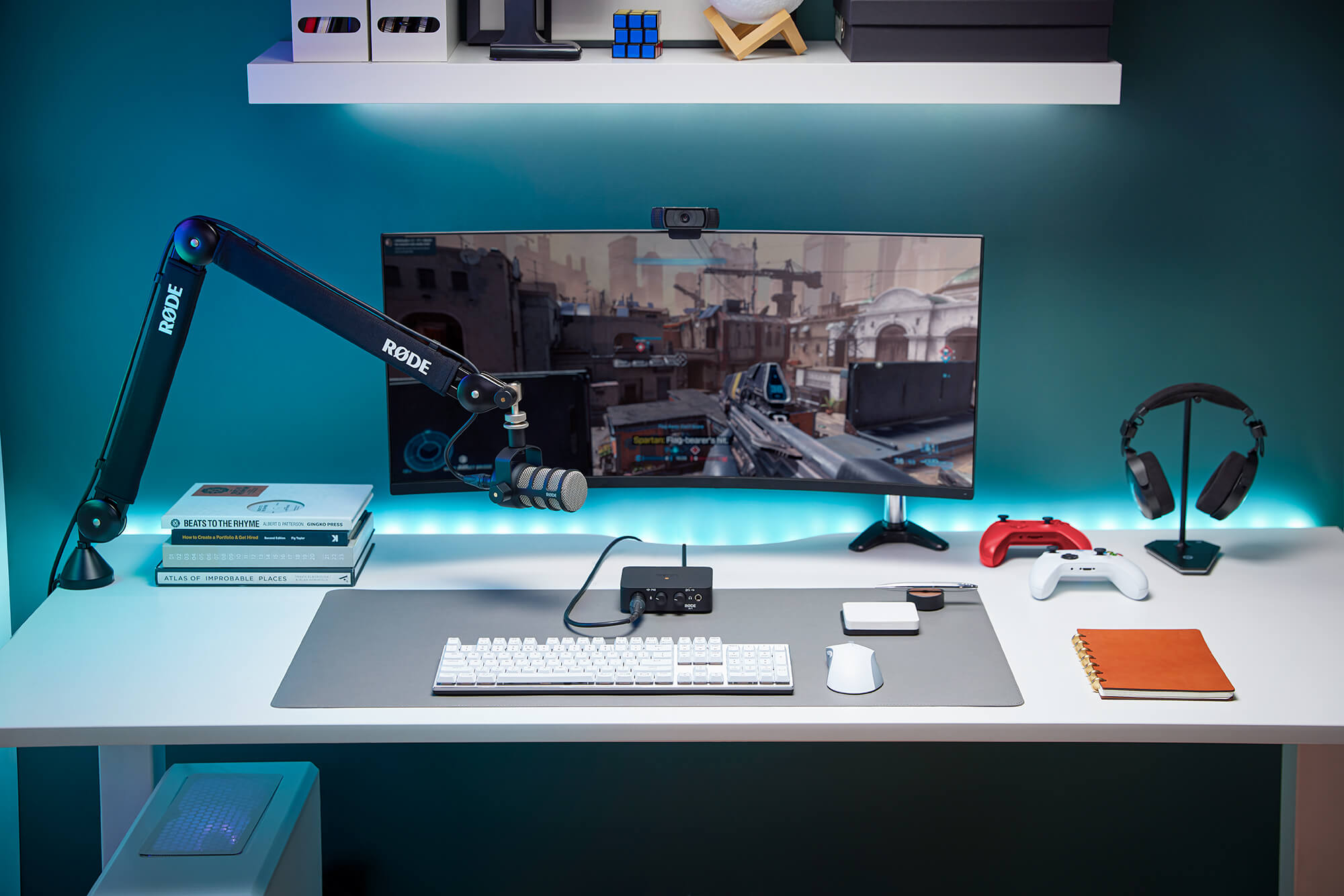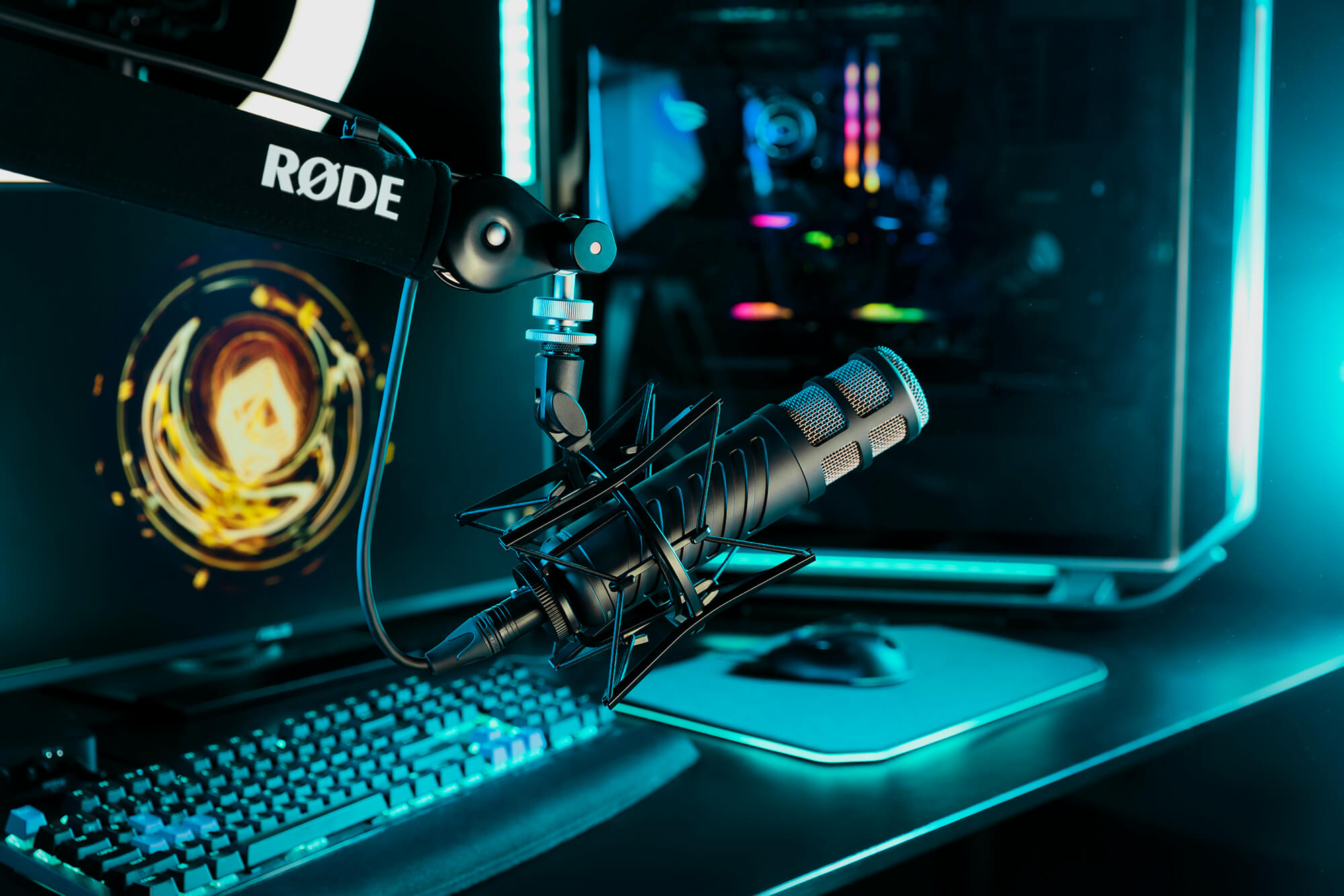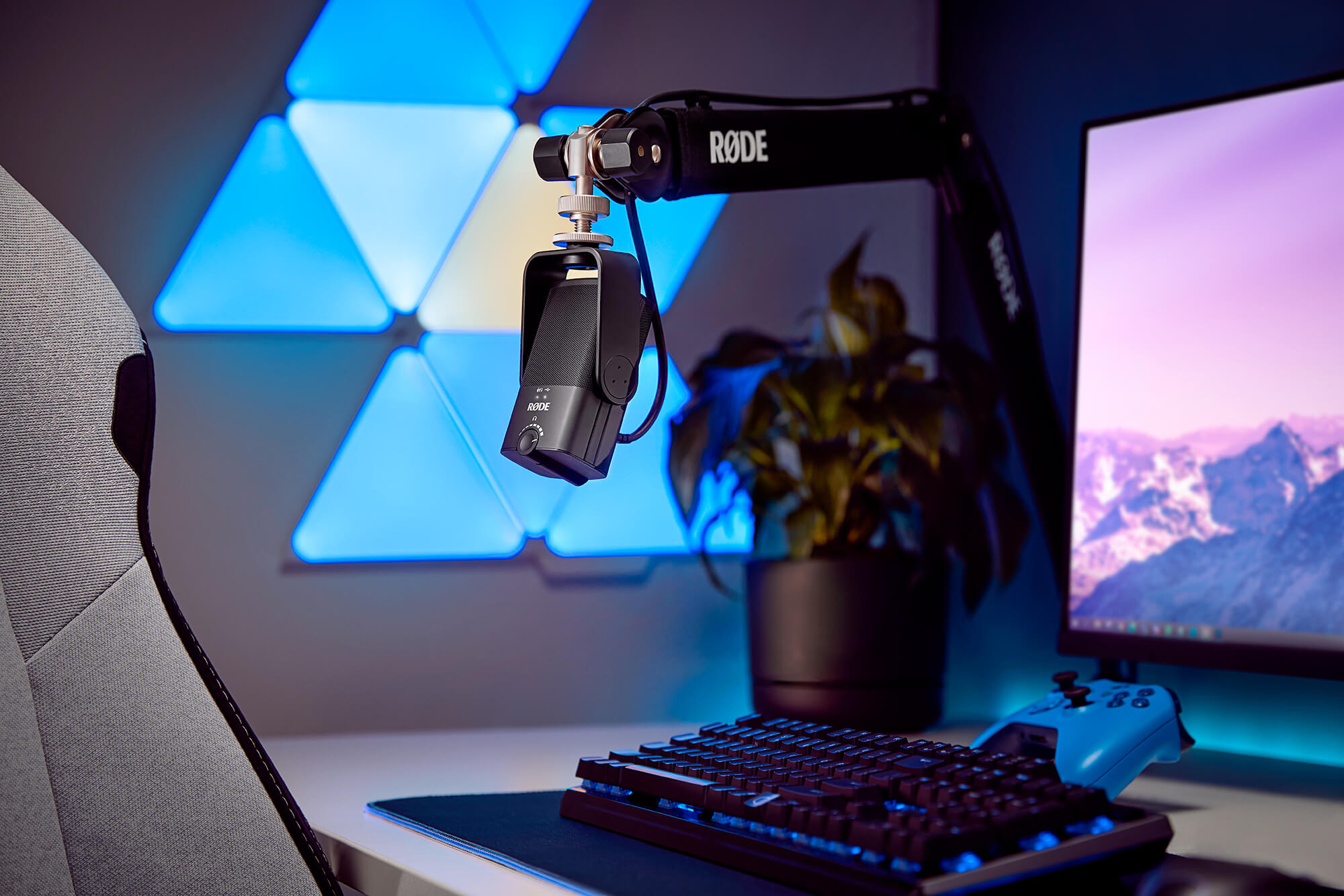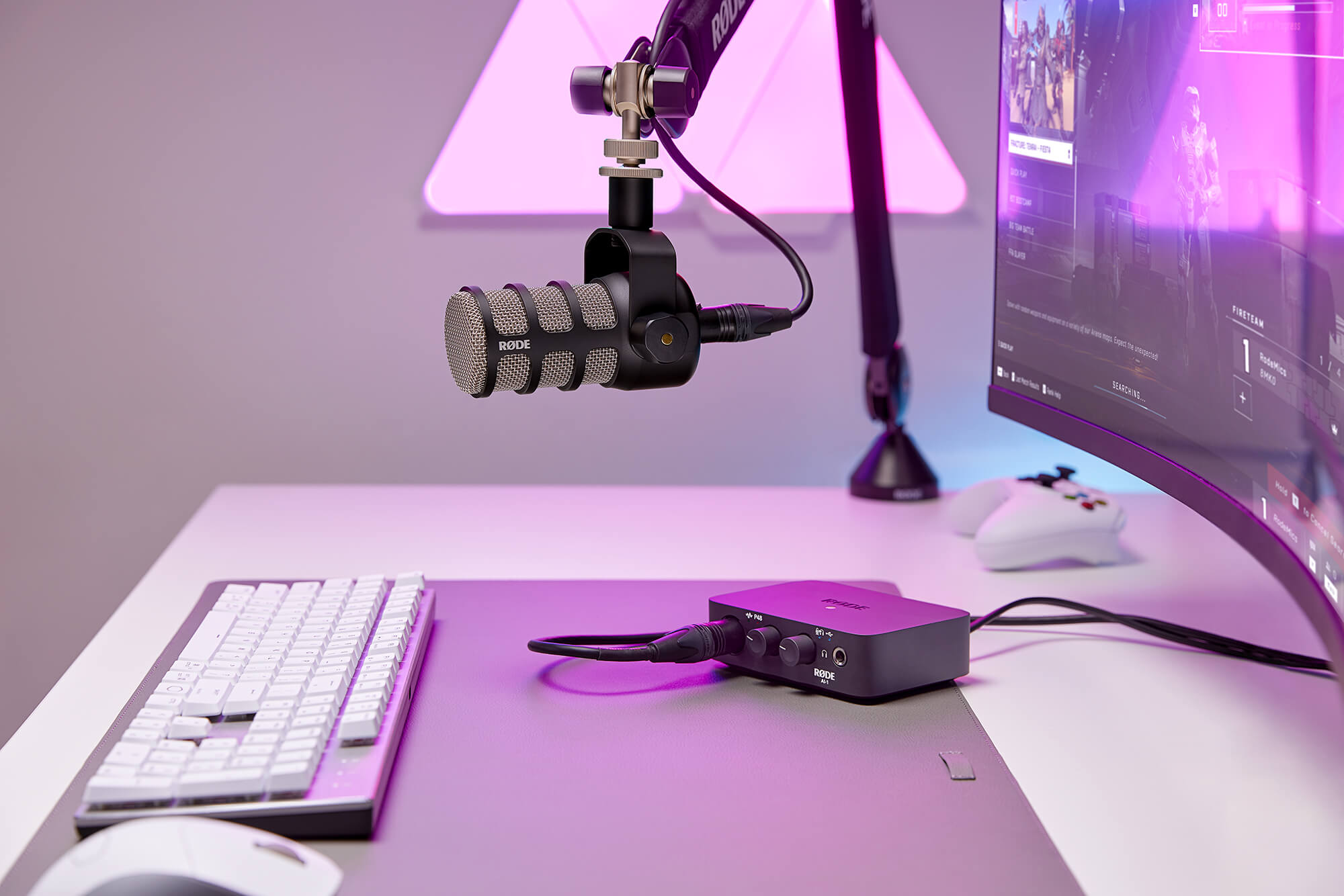High-quality microphone audio is one of the most important elements of a livestream. It is the bridge of communication between streamer and viewer, allowing them to be engaged and immersed in the experience. This makes a microphone the centrepiece of any streamer’s setup, and with many different options to choose from, it’s important to know which mic will suit your scenario and yield the best results for your stream.

This article will take a look at dynamic and condenser mics: how they work, the differences between them, and which one is the best for gaming or streaming.
Dynamic Mics
Dynamic microphones operate by the movement of a thin diaphragm that is attached to a coil of wire suspended in a magnetic field. As sound waves hit the diaphragm, it vibrates the coil which interacts with the magnetic field to create an electrical current.
Unlike condenser microphones, dynamic mics generally do not have an internal preamp, so the signal they produce will need to be amplified by an external preamplifier, such as in an audio interface or mixer. They are also less sensitive than condenser microphones, so will usually require more gain from a preamp to produce a strong signal and will also require you to be right up close to the mic to get the best possible sound (around 5-10cm from the diaphragm).
Dynamic mics generally have a narrow cardioid polar pattern. This, combined with their comparatively low sensitivity, mean they are excellent at rejecting background noise, like air conditioners or keyboard and mouse clicks.

The Procaster is a popular dynamic choice for gaming and streaming
They have a simple design with fewer internal components, which makes them more robust than condenser microphones. Dynamic mics can also reliably handle higher sound levels much better than their condenser brethren, which means you can be a bit more "expressive" during your stream without having to worry about overloading the mic’s capsule.
Some models, such as the RØDE PodMic and Procaster, also offer extra features like an internal pop filter for managing plosives and internal shockmounting for reducing vibrations in the microphone caused by knocks and bumps – both very useful for gaming and streaming scenarios.
Condenser Mics
Condenser microphones consist of a diaphragm placed very close to an electrically charged backplate, which together act as a capacitor. As sound waves hit the diaphragm, it vibrates, moving closer and further away from the backplate. This movement causes changes in capacitance, creating an electrical signal, which is then amplified by an internal preamp. Both the preamp and backplate require external power to operate, which is provided either by phantom power from a mixer, external preamp or audio interface, or batteries.

The NT-USB Mini is an easy-to-use USB condenser microphone that delivers great-sounding streaming audio
Condenser mics like the RØDE NT1 or NT-USB Mini offer a wider, smoother frequency response than dynamic microphones. This means the sound they produce will be clearer and more detailed, particularly in the low and high frequencies. In general terms, they sound superior to dynamic microphones, though this will obviously depend on the type of microphone and your personal preference.
However, condenser microphones are more sensitive than dynamic microphones. This can make them more prone to picking up background noise, particularly in an environment that is not well sound proofed. They will also generally require a high-quality external pop filter and shockmount.
Dynamic or Condenser: Which One Is Better for Gaming and Streaming?
If you’re streaming from a treated room or studio with little to no background noise, a condenser mic is great choice as it will offer superior sound. They are also more forgiving than dynamic microphones when it comes to proximity to your mouth, giving you a little more freedom to move around.
An external pop filter and shock mount will greatly help to tame harsh plosives and noises such as table knocks and bumps when using a condenser mic, however, they are quite bulky and may obstruct much of your shot if placed too close to the camera. Dynamic mics like the PodMic and Procaster offer internal shockmounting for protection against plosives, knocks and bumps without the need for an external shockmount and pop filter.
For environments that are more susceptible to sound reflections, dynamic mics offer superior isolation from background noise as well as keyboard and mouse clicks when gaming, keeping the focus on you. They are also better at handling loud sound peaks without distorting, so if you find that you have a wide dynamic range when streaming, they will be a better choice for a consistent sound.
In a nutshell, both are great choices, but it depends on your environment and personal preference:
If you have a nice, well soundproofed recording space, use a condenser for rich, detailed audio. Just be mindful of sensitivity to loud peaks, keyboard and mouse clicks, and the need for an external shockmount and pop filter.
Looking for a great RØDE condenser mic for streaming? Check out the NT1, NT1-A or NT-USB Mini.
If your recording space isn’t soundproofed or you’re highly conscious of keyboard and mouse clicks, use a dynamic microphone (they work great in any environment). Many have the added benefit of internal shockmounting and a pop filter too.
Looking for a great RØDE dynamic mic for streaming? Check out the PodMic and Procaster.


